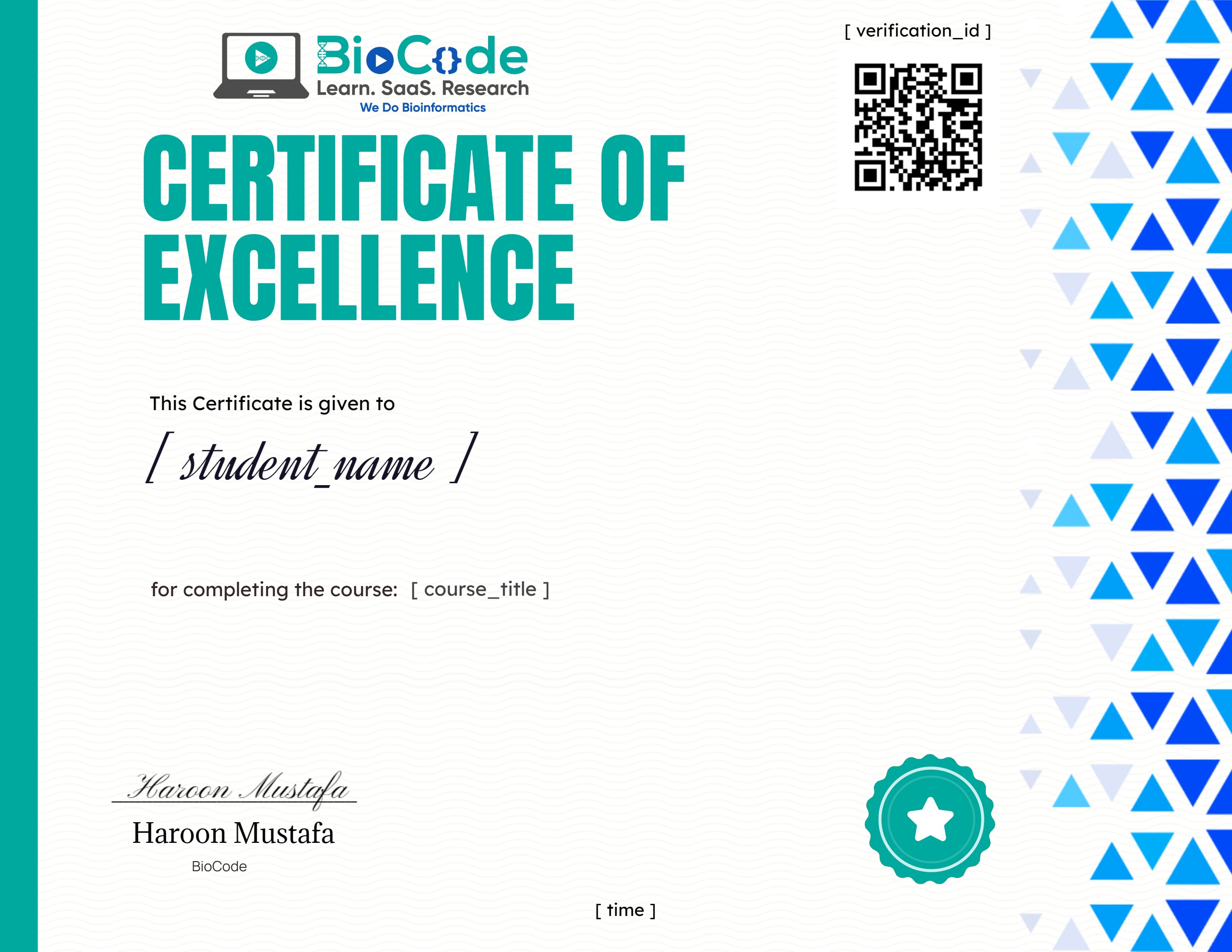PyMol MasterClass: Perform Expert Level 3D Structure Visualization for Drug Discovery
About Course
PyMol MasterClass: Perform Expert Level 3D Structure Visualization for Drug Discovery
Protein plays an important role in many cellular processes because they are the functional and structural components of the cell. Protein tertiary structure is the three-dimensional shape of a protein. The 3D structure of a protein largely determines its function and, once the structure is known, scientists can develop drugs that target this unique shape. The interactions between proteins control and change the course of cellular processes.
Therefore, understanding the binding of proteins and studying the interactions between proteins can provide insight into how these interactions regulate the mechanism and working of proteins. This is also useful in the development of new drugs and therapies for protein-regulated diseases. Furthermore, analyzing the interactions between proteins can help researchers to understand how proteins work in a complex system and how distortions in these interactions can lead to disease.
PyMol is a cross-platform molecular graphics tool that is widely used for the three-dimensional (3D) visualization of proteins, nucleic acids, small molecules, electron densities, surfaces, and trajectories. It is a powerful tool to understand the interactions that exist between the atoms of a protein and it allows bioinformaticians to see the exact location, number, bond distance, bond angle, and strength of these interactions in the structure of a protein. In this way, one can identify how these interactions play a role in functions and how the changes due to mutations can affect the protein structure and function.
BioCode is offering a PyMol MasterClass that provides step-by-step guidance to students on biomolecule visualization in depth. Through this course, the students will learn how to visualize structures/molecules at an expert level and make publication-ready figures using PyMol. They will be able to perform interaction analysis between Protein-Ligand, Protein-Protein and mRNA-miRNA docked complexes to better understand the binding sites and efficacy of the drugs.
In this course, students will superimpose multiple protein 3D structures, compare the hydrogen bond interactions among all, and can provide insights into the structural basis of protein function and evolution. Students will also visualize the 3D structures of the disease-related targets to better understand the underlying problems and design new molecular constructs to tackle the issues accordingly.
This course will include the following sections:
Section 1: Introduction to PyMol and Biomolecule Visualization
Description: This section will focus on making sure that the students gain an understanding about the importance and use of PyMol and the students will also learn how a biomolecule is visualized on PyMol.
Learning Outcomes: Upon completion of this section, students will be able to:
- Explain How PyMol Works.
- Perform Biomolecule Visualization.
Section 2: Hands-on Structural Visualization For Drug Discovery
Description: This section will focus on making sure that the students learn how to perform various structural visualizations for drug discovery by performing analysis on real-life biological data. Students will perform 3D structure alignment between proteins and understand interactions between a docked complex. Students will also understand how to compare mutant sites between wild and mutant proteins, execute hydrogen bond analysis, and find interactions between protein-protein complexes. By the end of this section students will gain a proper understanding of how to create publication-ready figures of any biomolecule.
Learning Outcomes: Upon completion of this section, students will be able to:
- Perform 3D Structure Alignment (Superimposition) of Biomolecules using PyMOL.
- Perform Interaction Analysis Between a Protein-Ligand Complex (Wire, Licorice, Ribbon Representation).
- Identify Polar Contacts Between Human Adenovirus and Inhibitor.
- Find Interactions Between Protein-Protein Complex (Surface, Cartoon, Stick Representation).
- Perform Hydrogen Bond Interaction Analysis (Inter and Intra Protein Analysis).
- Perform Mutation Site Interaction Analysis.
- Create Publication Ready Figures using PyMOL.
Course Content
Introduction to PyMol and Biomolecule Visualization
-
A Comprehensive Introduction to PyMol and Biomolecule Visualization
08:34 -
Assignments Question
Hands-on Structural Visualization for Drug Discovery
Earn a certificate
Add this certificate to your resume to demonstrate your skills & increase your chances of getting noticed.

